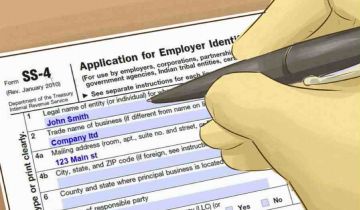If you own a business, there’s an excellent chance you have an accountant who will deal with the small details of the tax code in order to minimize your tax bill or maximize your returns. It’s possible you’ll lose interest as soon as a term such as ‘fixed asset depreciation deduction’ enters a conversation, because it’s someone else’s job to deal with that. However, if you want to maximize your profits in 2017 and beyond, this is a part of the tax code you should be aware of, because it requires knowledge about your business to which your accountant may not have ready access.
In this article...
What are fixed assets?

Depreciation
What many businesses do in one form or another is spread the deductions out over several years. The allowable time frames vary based on the item or property purchased.
- Manufacturing tools (including tractors): three years
- Computers and other office equipment, light vehicles, and construction equipment: five years
- Miscellaneous assets: seven years
- Real estate: 27.5 years for residential, 39 years for commercial
- Improvements to land: variable
Businesses may choose this option with an eye towards long-term tax predictability, and because there are multiple ways to make use of it.
Get the facts direct from the IRS
One example, as described by IRS publication 946, is called the straight line method. This method deducts the same amount per year for the expected life of the item. For example, using the list above, light vehicles are expected to be used for five years. The purchase of a $50,000 company car or van, then, can be treated as a $10,000 deduction for each of those five years. Another option is accelerated depreciation. This allows companies to deduct more of the asset expense earlier in the life of the asset, and is often used when an asset is expected to have most of its productive use soon after its purchase. Other possibilities exist depending on various factors.
There is, however, another option: treat the asset purchase the same as any other business expense, and take the entire cost as a deduction in the same year the item was purchased. The $50,000 company van, for example, can be taken as a $50,000 deduction during the purchasing year. It does not need to be split up across multiple years.
The argument for this option is the most straightforward: maximizing your deductions this year maximizes your profit, and your profit is your lifeblood. Financial wisdom always stresses the long-term, which is correct, but is your business better served by knowing you have a certain amount of tax deduction in years to come, or having cash to invest now? Unless you own a business that does not need further investment–a rare thing indeed–having more resources at your disposal is usually going have a more positive effect than pushing those resources into later years. This is especially true given the vagaries of the market, where you can only make educated guesses as to the usefulness of those future deductions.
Keep and inventory
Keep a solid inventory of your assets. Everything you buy for your business can be a source of deductions; you can put them all to work reducing your tax bill and boosting profits for the year. Contact us to discuss the best methods of asset tracking and management.


